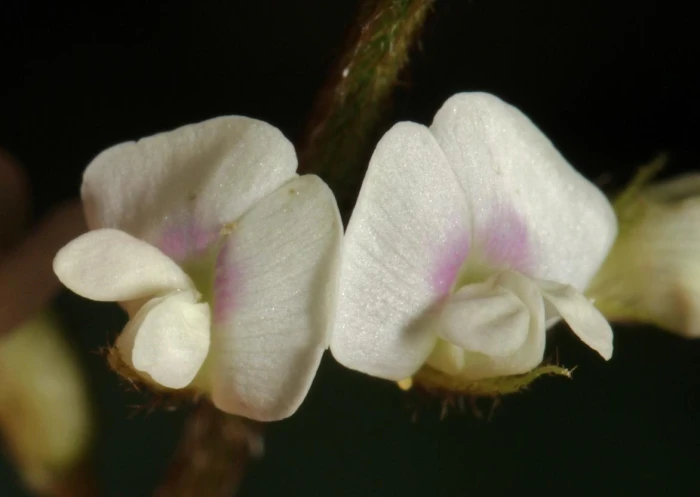Perennial Soybean
(Neonotonia wightii)
Perennial Soybean (Neonotonia wightii)
/
/

Wynand Uys
CC BY 4.0
Image By:
Wynand Uys
Recorded By:
Copyright:
CC BY 4.0
Copyright Notice:
Photo by: Wynand Uys | License Type: CC BY 4.0 | License URL: http://creativecommons.org/licenses/by/4.0/ | Rights Holder: Wynand Uys | Publisher: iNaturalist | Date Created: 41722 |



















Estimated Native Range
Climate Requirements
| • Precipitation | 34" - 40" |
| • High Temp. | 79°F - 89°F |
| • Low Temp. | 43°F - 62°F |
Summary
Neonotonia wightii, commonly known as perennial soybean, is a perennial herb that is native to open woodlands and grasslands in sub-Saharan Africa, Yemen, India, and Sri Lanka. It has been widely introduced as a forage plant in various tropical and subtropical regions around the world. This species typically exhibits a climbing or trailing growth habit and can reach lengths of several meters. The leaves are trifoliate, resembling those of annual soybeans, and it produces small purple to blue flowers which are generally not considered showy. The plant is valued for its ability to fix nitrogen, improving soil fertility.
Perennial soybean thrives in partial shade to full sun conditions and prefers well-drained soils. It is drought-tolerant once established, making it a low-maintenance option for suitable climates. In cultivation, it is primarily used for livestock forage due to its high protein content and rapid growth. However, it is potentially invasive outside its native range and can outcompete native vegetation, so it is important to ensure it is not a threat to local ecosystems before planting.CC BY-SA 4.0
Perennial soybean thrives in partial shade to full sun conditions and prefers well-drained soils. It is drought-tolerant once established, making it a low-maintenance option for suitable climates. In cultivation, it is primarily used for livestock forage due to its high protein content and rapid growth. However, it is potentially invasive outside its native range and can outcompete native vegetation, so it is important to ensure it is not a threat to local ecosystems before planting.CC BY-SA 4.0
Plant Description
- Plant Type: Herb, Vine
- Height: 3-6 feet
- Width: 3-5 feet
- Growth Rate: Moderate
- Flower Color: White
- Flowering Season: Summer, Fall
- Leaf Retention: Evergreen
Growth Requirements
- Sun: Full Sun, Part Shade
- Water: Medium
- Drainage: Fast, Medium, Slow
Common Uses
Erosion Control, Groundcover, Low Maintenance
Natural Habitat
Native to open woodlands and grasslands
Other Names
Common Names: Indian Jointvetch, Glycine, Coffee Weed
Scientific Names: Neonotonia wightii, Glycine albidiflora, Glycine bujasia, Glycine claessensii, Glycine laurentii, Glycine mearnsii, Glycine wightii, Glycine wightii subsp. wightii, Glycine wrightii
GBIF Accepted Name: Neonotonia wightii